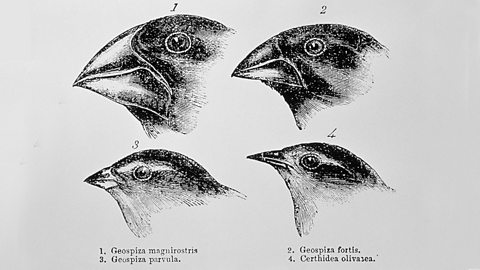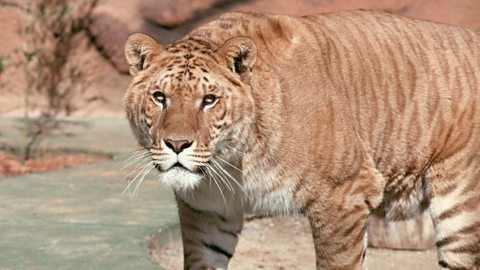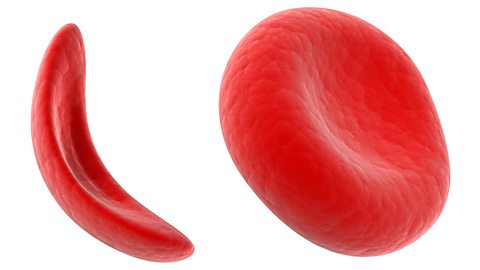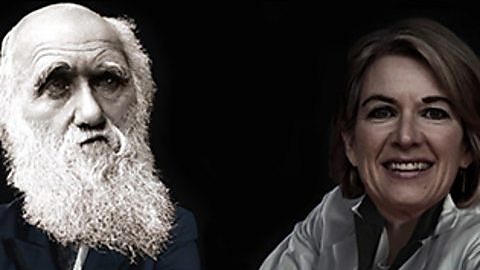Key points
- Evolution explains how better adapted organisms have an advantage and are more likely to have offspring with this same adaptation.
- Over many years this leads to the formation of new species.
- Evolutionary trees show how different species have evolved over time from common ancestors.
Video - How lemurs have evolved
Professor Brian Cox: Ever since life began, it's been diversifying.
As conditions change, so does life. It evolves. Evolution is driven by a process called natural selection. And there's no better place to see how it works than in the forests of Madagascar.
There, at the top of the tree, is an Indri, which is the largest lemur in Madagascar. The reason it's thought that we find lemurs here in Madagascar, in Madagascar alone, is because there are no simians, there are no chimpanzees, none of my ancestral family dating back tens of millions of years to out compete them.
So, what's thought happened is that, around 65 million years ago, one of the lemurs ancestors, managed to sail across the Mozambique Channel, and landed here. There were none of those competitors here, and so the lemurs have flourished ever since.There are now over 90 species of lemur, or sub-species, in Madagascar. No species of my lineage, the simians.
Over a vast sweep of time, the lemurs have diversified to fill all manner of different habitats. From the arid, spiney forests of the south, to the rocky canyons in the north. There is something about this island that is allowing the lemur's DNA to change in the most amazing ways.
We're on the hunt for an aye-aye, the most closely related of all the surviving lemurs to their common ancestor.
The team want to attach radio collars onto the aye-ayes so they can track their movements. But first, they need to find and sedate them, which is an incredibly tricky business.
Here is the aye-aye that was tranquilised last night. They finally got her about half an hour after we left. I think it was probably because we were disturbing her. Apparently, as soon as we'd gone, she came down the tree and she was tranquilised, and as you can see, she's really well sedated now.
Which is fortunate for me, because she has certain adaptations that I wouldn't like to be deployed. You can see there, the teeth, the teeth are very unusual for a primate. In fact, unique, because they carry on growing, so she's much more like a rodent in that respect, and that's so she can gnaw into wood. See, aye-ayes have filled a unique niche on Madagascar. It's a niche that's filled by woodpeckers in many other areas of the world.
What she does is she feeds on grubs and bugs inside trees, and to do that she has several unique adaptations of which the teeth are one. The most startling is this central finger here. It's bizarre. It's got a ball and socket joint, for a start, so it has complete 360 degree movement. It feels to me almost as if it's broken, but it isn't. It's just you can move it around in any direction.
And she uses that finger, initially, to tap on the trunk of the tree and then listening to the echo from that tapping with these huge ears, she can detect where the grubs are. From then, she gnaws through the wood with those rodent like teeth, and then uses this finger again to reach inside the hole and get the bugs out.
So the question is, why? How could an animal be so precisely adapted to a particular lifestyle? The answer is natural selection.
See, what must have happened, is way back when the ancestors of the lemurs, the lemuriformes, arrived in Madagascar, there must have been a mutation that lengthened the middle finger ever so slightly of one of those lemurs, and that must have given it an advantage. That must have allowed it, perhaps, to reach into little holes and search for grubs. There's some reason why that lengthened middle finger meant that that gene was more likely to be passed to the next generation, and then down to the next generation.
So that landscape of possibilities, is narrowed. It's narrowed because that gene persists, and it's persisted now for at least 40 million years because this species has been on one branch of the tree of life now for over 40 million years, and so, over those years that middle finger has got more and more specialised.
Natural selection has allowed the aye-aye's wonderfully mutated finger to spread through the population. And this same law applies to all life. If you have a mutation that helps you in the struggle to survive, you are more likely to leave more offspring, and in the next generation, that mutation is more likely to survive.
So this animal is a beautiful example, probably one of the best in the world, of how the sieve of natural selection produces animals that are perfectly adapted to live in their environment.
Can you answer these questions based on the video?
1. What is evolution driven by?
2. What lengthened the middle finger of the lemur thousands of years ago?
- Natural selection
- A mutation
Evolution by natural selection
Evolution is the process by which small changes in organisms occur over long periods of time and new species are formed. A species is a group of organisms that can interbreed to have fertileCapable of producing offspring. offspring. Natural selection drives evolution.
The steps in evolution
- In every population there is variationSmall changes in living organisms., some of which is inherited.
- Individual organisms with the best adaptationA characteristic that helps an organism to survive in its environment. are most likely to survive and reproduce. This is natural selection.
- inheritanceThe passing of characteristics determined by genes from parents to offspring. means these adaptations are likely to be passed to offspring.
- It also means that less well adapted organisms are less likely to pass on their adaptations.
- Over many generations these small differences add up to the formation of new species by evolution.
Variation can be caused by small changes in DNA called mutations. Most of these have no effect, some are advantageous and some are disadvantageous.
Charles Darwin
Charles Darwin was an English scientist who first proposed the theory of evolution by natural selection in a book called On the Origin of Species in 1859. He studied fossils and variation in plants and animals on a five year voyage around the world on a sailing ship called HMS Beagle.
During this trip, the ship visited the Galapagos Islands off the coast of Ecuador in the Pacific Ocean. There he saw some small birds called finches on the different islands which looked similar, but had differences in their beak shapes. Darwin saw that these changes allowed the birds to feed on different foods. He suggested that they originally all belonged to one population, but had slowly changed over time to suit the different habitats on the islands.
Darwin chose not to publish his theory. He correctly thought it would cause a lot of controversy. Twenty years later, Darwin was approached by another scientist called Alfred Wallace who had come up with the same theory. They published their scientific ideas jointly, but Darwin is remembered for devising the theory first.
At the time many people were upset by his ideas. Today some religious views about the creation of the world and the organisms in it still conflict with the scientific agreement about evolution.

Evidence of evolution
Evidence of evolution is seen in the fossil recordAll the fossils that have ever been discovered.. Small changes that Darwin suggested can be seen in these fossils.
There are gaps in the fossil record because:
- Not all fossils have been discovered yet.
- Some fossils have been melted in magma during the rock cycle.
- Not all parts of organisms become fossils.
bacteriaLiving organisms which can only be seen with a microscope. Some bacteria cause disease, others are useful. can evolve quickly because they reproduce at a fast rate. Mutations of bacteria produce new strains. Some bacteria might become resistant to certain antibiotics, such as penicillin, and cannot be destroyed by the antibiotic. The evolution of the bacteria is an example of natural selection.
Evolutionary trees
Evolutionary trees are diagrams that show how different species have evolved from a common ancestor - an organism that lived thousands or millions of years ago.
Animals with a backbone are called vertebratesAnimals with backbones. They include bony fish, amphibians, reptiles, birds and mammals.. This evolutionary tree shows how different groups of vertebrates have evolved over time.
The oldest part of the diagram is the bottom where there was a common ancestor for all vertebrates. We are not sure what animal this is. Jawless fish first separated from everything else, followed by cartilaginous fish (like sharks), before bony fish and so on. The coloured short lines show where key features have evolved. You can see hair only on mammals because it is after the separation from amphibians and turtles.
Use the evolutionary tree to find the answer to these questions.
1. Which animal on the evolutionary tree is most closely related to snakes?2. Why don’t fish have four limbs?
- Lizard
- This characteristic only evolved after the other groups of animals had separated from them.
Test your knowledge
Quiz
Test questions
Write a paragraph to answer the following question. Tap 'Show answer' to see seven points you could have included.
Describe how sharks have evolved the ability to detect blood from a long way away.
- In every population, there is variation, some of which is inherited.
- This means some sharks will have been able to detect blood a little better than others.
- Individual organisms with the best adaptations are most likely to survive and reproduce. This is natural selection.
- Inheritance means these adaptations are likely to be passed to offspring.
- Therefore their offspring are likely to have been able to detect blood further away so could find more food.
- Less well-adapted organisms are less likely to pass on their adaptations. So the sharks that couldn’t detect blood so far away probably got less food and were less likely to have offspring with this ability.
- Over many adaptations, these small differences add up to the formation of new species by evolution.
GCSE exam dates 2025
Find out everything you need to know about the 2025 GCSE exams including dates, timetables and changes to exams to get your revision in shape.

More on Inheritance and genetics
Find out more by working through a topic
- count8 of 11

- count9 of 11

- count10 of 11

- count11 of 11
